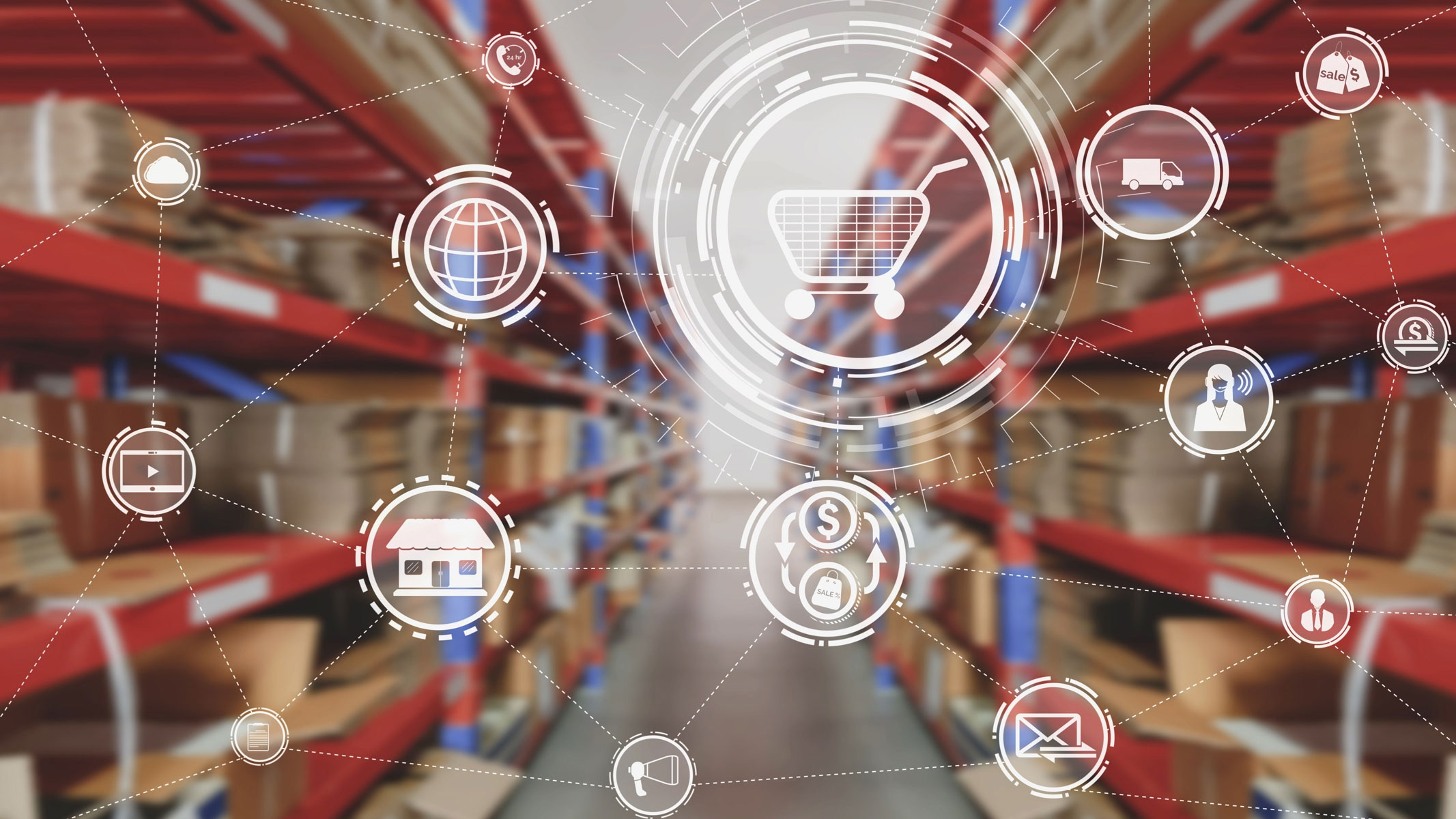Regarding fulfilling orders, eCommerce businesses always struggle between two models. That is; Omnichannel vs multichannel fulfillment. The choice between these two models has important implications for customer satisfaction, operational efficiency, and overall business results.
To know which one fits the best for your business, let’s understand the key differences between multichannel and omnichannel fulfillment
What is Multichannel Fulfillment?
Multichannel fulfillment refers to the process of fulfilling orders through multiple sales channels such as brick-and-mortar stores, online stores, mobile apps, social media, and more. It is a product-centric model.
More than 80% of customers check product availability online before visiting the physical store. It allows businesses to leverage their existing fulfillment infrastructure to meet customers wherever they choose to shop.
The key aspects of multichannel fulfillment are:
- Centralized inventory across all sales channels
- Each channel has its inventory
- Leveraging existing fulfillment centers and processes
- Shipping orders from optimal location to customer
- Providing flexible fulfillment options to customers
6 Key Characteristics of Multichannel Fulfillment
Multichannel fulfillment involves fulfilling orders through multiple sales channels while keeping inventory separate for each channel. Some key characteristics of multichannel fulfillment include:
1. Inventory is separated by channel/location
With multichannel fulfillment, inventory is allocated and stored separately for each sales channel. For example, inventory for online orders is kept in the eCommerce fulfillment center while inventory for retail store orders is kept at each store location.
2. Orders are fulfilled from channel-specific inventory
When an order comes in from a specific sales channel, it is fulfilled using only the inventory allocated to that channel. The inventory pools do not commingle across channels.
3. Limited visibility across channels
Since inventory is siloed by channel, there is very limited inventory visibility and the ability to leverage cross-channel. Inventory levels, order information, and customer data are confined within each channel.
4. Requires channel-specific operations
Multichannel fulfillment requires channel-specific warehouse operations, inventory management, order processing, and transportation. There are limited synergies across channels.
5. Difficult to optimize inventory
With inventory scattered across multiple locations, it can be challenging to optimize inventory levels and minimize stockouts. Excess inventory in one channel cannot be leveraged to meet demand in another channel.
6. Provides channel-specific customer experience
Customers generally interact with one sales channel at a time when placing orders, rather than having a unified brand experience across all channels.
What is Omnichannel Fulfillment?
Omnichannel fulfillment refers to an integrated approach to inventory, order management, and fulfillment across all sales channels and customer touchpoints. It provides a seamless shopping experience by unifying processes and systems across channels like online, mobile, in-store, social media, and more.
With omnichannel fulfillment, retailers can fulfill orders from any point within the network, regardless of the original purchase location. Inventory is visible across the entire network rather than siloed by channel. This provides flexibility to fulfill orders most efficiently while giving customers more options on how and where to receive their purchases.
The goal of omnichannel fulfillment is to create a unified commerce experience where the distinctions between channels disappear from the customer’s perspective. Customers can purchase, return, or exchange a product through any channel, and retailers can fulfill orders using their entire network of inventory and logistics capabilities. This requires the integration of technology, inventory, order management, customer data, and fulfillment operations across channels.
Key Characteristics of Omnichannel Fulfillment
Omnichannel fulfillment is characterized by a unified inventory and seamless customer experience across all sales channels. Some key characteristics include:
1. Unified Inventory
With omnichannel fulfillment, inventory is centralized across all sales channels, including online, in-store, mobile, etc. Inventory levels are synced in real-time so customers get a consistent product availability and ordering experience regardless of channel.
2. Seamless Customer Experience
Customers expect a seamless shopping experience as they switch between channels. With omnichannel fulfillment, the experience stays consistent. Features like buy online, pick up in-store (BOPIS), ship-from-store, and in-store returns of online orders all contribute to a unified customer experience.
3. Integrated Order Management
An omnichannel approach requires connecting order management systems across all sales channels. This enables inventory visibility and order orchestration across the network. Orders can be fulfilled from any node in the network to optimize for speed and cost.
4. Flexible Fulfillment Options
Customers have product delivery options like home delivery, in-store pickup, curbside pickup, locker pickup, and more. Omnichannel fulfillment provides the operational flexibility to meet customer delivery expectations.
5. Real-Time Tracking and Communication
Customers can track orders in real time across fulfillment channels. Retailers keep customers updated with text/email alerts on order status. This level of communication improves customer satisfaction.
6. Consistent Brand Experience
With unified processes and systems, retailers can ensure brand consistency across channels in areas like product information, marketing, promotions, pricing, etc. This builds trust and loyalty.
Omnichannel Vs Multichannel Fulfillment
The following table shows the key differences between omnichannel vs multichannel fulfillment.
| Aspect | Multichannel | Omnichannel |
| Inventory | -Separate stock for online and physical stores
– Risk of stockouts if demand isn’t accurately predicted per channel – Difficulty fulfilling online orders with in-store stock (if not integrated) |
– Unified inventory management system
– Flexibility to fulfill orders from any location (store or warehouse) based on stock availability – Reduced risk of stockouts and overstock – Ability to offer in-store pickup for online orders (click-and-collect) |
| Customer Experience | – Inconsistent pricing, promotions, and product availability across channels
– Difficulty for customers to track orders across channels – Limited fulfillment options (e.g., online orders can’t be returned in-store) |
-Consistent pricing, promotions, and product information across all channels
– Customers can easily track orders and returns regardless of channel – Flexible fulfillment options (e.g., buy online, return in-store; ship to store) |
| Operational Complexity | – Requires separate processes, staffing, and technology for each sales channel
– Increased complexity in managing inventory and order fulfillment across channels |
– Streamlined processes due to unified inventory and order management
– Efficient use of staff and resources by leveraging a centralized system – Easier to scale operations as the business grows |
Which is Better for eCommerce Businesses?
When choosing between omnichannel vs multichannel fulfillment for an eCommerce business, there are pros and cons to each approach to consider:
Pros of Omnichannel for eCommerce
- Provides a seamless experience for customers across all channels – online, mobile, in-store, etc.
- Allows inventory visibility across the entire supply chain
- Enables customers to purchase, return, or exchange products through any channel
- Integrates systems and data to give a single view of inventory, orders, customers, etc.
- Meets customer expectations for flexibility and convenience
Cons of Omnichannel for eCommerce
- More complex to set up and manage across disparate channels
- Requires greater integration and coordination of systems and processes
- Can be more expensive to implement fully integrated omnichannel operations
- Needs consistent branding and messaging across all customer touchpoints
Pros of Multichannel for eCommerce
- Simpler to manage fewer channels, often with separate systems
- Allows customization for each channel
- Lower costs than fully integrated omnichannel
- Provides flexibility to test and optimize each channel independently
Cons of Multichannel for eCommerce
- Fragmented experience for customers across channels
- Lack of integration leads to inconsistencies, errors and duplication
- Inventory, order and customer data are siloed in channel-specific systems
- Harder to provide seamless fulfillment and returns across channels
- Can create a disconnected brand experience for customers
3 Tips for Omnichannel Fulfillment Strategy
A successful omnichannel strategy requires focus on a few key areas:
1. Inventory Unification
Omnichannel retailers need a single view of inventory across all channels and locations. This provides visibility into stock levels and allows for fulfillment from the optimal location. Inventory should be centralized or made visible across multiple warehouses, stores, and online. This enables fulfilling orders in the fastest, most efficient way.
Read Also: What is Smart Warehousing?
2. Order Orchestration
With orders coming in across many touchpoints, order management is crucial. Retailers need the ability to quickly determine the optimal sourcing for each order. Factors like customer location, product availability, delivery speed, and cost need assessment. Order orchestration software can help route orders to the best fulfillment source.
3. Customer Data
A single customer view is essential, with data integrated across channels. This provides insight into customer history, preferences, and behaviors. Retailers can then deliver personalized, seamless experiences. Capturing data at all touchpoints helps create this unified profile. Strong analytics are also key, to understanding performance across channels.
How ShipTop Can Help with Fulfillment?
ShipTop is a leading fulfillment center based in Canada and the USA. With decades of experience providing eCommerce order fulfillment services, ShipTop has the expertise to help online retailers implement a successful omnichannel strategy.
Our fulfillment centers are equipped to handle D2C, B2C and B2B orders across multiple sales channels, including online stores, marketplaces, brick-and-mortar retail, and more. We seamlessly integrate with all major eCommerce platforms and shopping carts.
ShipTop offers customizable solutions tailored to each client’s unique business needs. Our omnichannel services include:
- Inventory management across all sales channels
- Real-time inventory visibility and order orchestration
- Fast, accurate nationwide order fulfillment and shipping
- Returns management and reverse logistics
- Customer service support
- Analytics and Reporting
Let ShipTop Optimize Your Fulfillment Strategy
In conclusion, omnichannel and multichannel fulfillment strategies both have their advantages for eCommerce businesses. However, omnichannel fulfillment provides a more seamless and integrated experience for customers by unifying processes across all channels.
For optimal customer experience and operational efficiency, an omnichannel strategy is recommended for most eCommerce retailers today.
Consider working with a 3PL like ShipTop to implement a successful omnichannel fulfillment program. Their expertise and technology integration can help manage inventory, orders, and logistics across your sales channels.
Get in touch with us today to discuss your fulfillment needs and plan the strategy accordingly.






